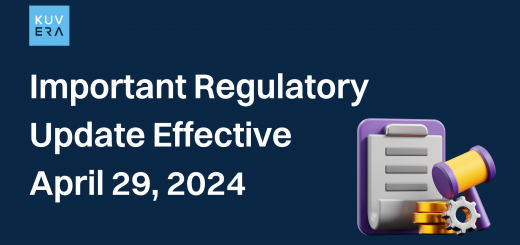The Economic Survey is an annual report prepared by the Ministry of Finance and presented in Parliament before the Union Budget. It provides a comprehensive review of the country’s economic progress over the past year and outlines future prospects. The survey covers key macroeconomic indicators, sectoral performance, fiscal trends, policy measures, and global influences on the Indian economy. It serves as a critical document for policymakers, investors, businesses, and financial analysts, helping them understand economic trends and formulate strategic decisions.
Importance of the Economic Survey in India
As quoted by the Business Standard, “The Economic Survey is an annual report from the Ministry of Finance that offers an in-depth analysis of the economy’s current state and future outlook. It serves as a crucial reference point for policymakers, economists, and industry stakeholders by highlighting key macroeconomic trends, assessing government policies, and suggesting fiscal strategies.”
Key Highlights of the Economic Survey 2025
The Economic Survey 2025 presents an optimistic outlook for the Indian economy, emphasising stability, sectoral contributions, inflation control, and financial sector robustness. Here are the key takeaways:
1. GDP Growth and Economic Stability
- India’s real GDP growth for FY25 is estimated at 6.4%, close to the decadal average, despite global economic uncertainties.
- The survey projects GDP growth in FY26 to be between 6.3% and 6.8%, indicating a stable economic trajectory.
- The real gross value added (GVA) is estimated to grow by 6.4% in FY25, showing resilience across various sectors.

2. Sectoral Performance
- Agriculture: The sector continues to perform strongly, operating well above trend levels.
- Industry: The industrial sector has surpassed its pre-pandemic trajectory, contributing to economic recovery.
- Services: Recent robust growth has brought the services sector back to trend levels, reinforcing India’s consumption-driven economy.

3. Inflation and Monetary Policy
- Retail headline inflation declined from 5.4% in FY24 to 4.9% in April-December 2024, reflecting effective monetary policy interventions.
- The survey attributes inflation control to government efforts such as buffer stock management, open market interventions, and easing import restrictions.
- Inflation is projected to align with the Reserve Bank of India’s (RBI) target of around 4% in FY26, supporting a favourable investment environment.
4. Strengthening Financial Stability
- The gross non-performing assets (GNPA) ratio of commercial banks declined to 2.6%, marking a significant improvement from its peak in FY18.
- The credit-GDP gap narrowed to -0.3% from -10.3% in FY23, indicating sustainable bank credit growth.
- The insurance sector grew by 7.7% in FY24, with total insurance premiums reaching ₹11.2 lakh crore.
- The pension sector saw a 16% YoY increase in subscribers, indicating rising awareness about retirement planning.

5. External Trade and Foreign Investment
- Gross foreign direct investment (FDI) inflows increased by 17.9% YoY in FY25, reflecting improved investor confidence.
- Overall exports (merchandise + services) grew by 6% YoY, despite global trade challenges.
- India’s external debt remains stable, with an external debt-to-GDP ratio of 19.4% as of September 2024.

6. Policy and Regulatory Developments
- The survey strongly advocates for Ease of Doing Business 2.0, focusing on systematic deregulation and reducing compliance burdens.
- Reforms in taxation, labour laws, and digital governance are highlighted as key areas to boost long-term economic growth.
- The survey emphasizes the necessity for increased private investment in infrastructure over the next two decades to sustain long-term growth.
- It strongly recommends that the government step aside in certain areas, allowing businesses greater autonomy and reducing unnecessary interventions.

For mutual fund investors, there are several key points to consider when reviewing the Economic Survey 2024-25:
1. Projected Economic Growth
The forecast of GDP growth could influence the performance of equity markets. Investors need to assess how sectors linked to this growth—such as infrastructure and consumption—may impact equity mutual funds.
2. Fiscal Deficit and Government Spending
The fiscal deficit target of 4.9% and the ₹11.1 lakh crore allocation for infrastructure development can positively impact sectors like construction, engineering, and utilities, which could benefit equity and hybrid mutual fund investments.
3. Infrastructure Investment Focus
A significant chunk of government spending is directed towards infrastructure, signalling potential opportunities for mutual funds focused on infrastructure and capital goods sectors.
4. Rural Development and Job Creation
With a strong focus on rural development and job creation, funds targeting rural-oriented sectors and companies could see improved prospects. Equity funds and rural-oriented schemes may be appealing.
5. Tax Reforms
If introduced, the tax changes, especially those affecting capital gains (particularly in short-term equity investments), can impact investor returns. Investors need to factor in how these reforms might affect the performance of equity-oriented funds.
6. Sectoral Shifts
With the government focusing on infrastructure and job creation, sectoral equity funds targeting construction, transportation, and rural sectors may become more attractive for long-term investments.
Furthermore, the Large-cap funds may benefit from stable GDP and corporate earnings, while mid & small-cap funds may see growth from industrial expansion, despite high valuations. Thematic and sectoral funds like infrastructure, consumption, and tech-focused funds could thrive due to government initiatives, rising disposable income, and AI advancements. Debt funds will gain from interest rate cuts, benefiting long-duration funds, while short-term and liquid funds will benefit from financial stability. Hybrid funds (balanced advantage) will attract investors seeking reduced volatility in uncertain times.
While the Economic Survey 2025 presents an overall optimistic scenario, investors should consider the following risks:
1. Global Economic Uncertainty
Geopolitical tensions, US Fed rate decisions, and supply chain disruptions could lead to market fluctuations.
2. Stock Market Valuations
Mid- and small-cap segments may be prone to corrections after their recent rallies.
3. Inflation & Interest Rate Risks
Any unexpected inflationary spikes could delay rate cuts and impact debt fund returns.
4. Regulatory Changes
SEBI’s proposed norms on expense ratios and fund categorization may affect mutual fund strategies.
5. AI Disruptions & Job Market Risks
The impact of AI on employment could alter consumer spending patterns, affecting sectoral investments.
Wrapping Up
The Economic Survey 2025 highlights India’s strong economy, sectoral resilience, and policy measures, fostering a stable financial market. Emphasizing infrastructure and deregulation strengthens growth prospects. Mutual fund investors can consider a mix of equity, debt, and hybrid funds based on their risk tolerance and investment horizon. While the outlook is positive, vigilance against global risks and market corrections is essential, with a focus on diversification.
The upcoming Union Budget will provide more clarity on policies, aiding in refining investment strategies. Staying informed and data-driven is key to navigating India’s evolving financial landscape.
Interested in how we think about the markets?
Read more: Zen And The Art Of Investing
Watch here: Rebalancing for Mutual Fund Investors












